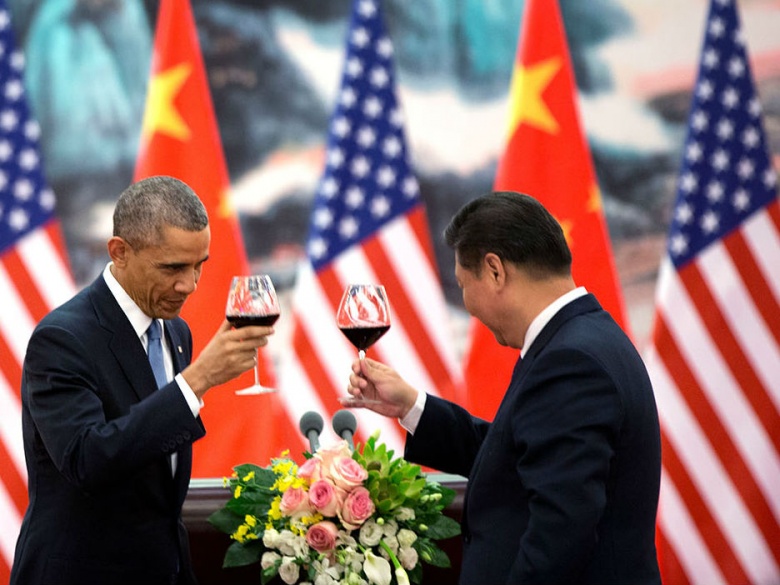Top 10 Retailer
TABLE OF CONTENTS
- a. Wal-Mart Stores, Inc.
- b. Costco Wholesale Corporation
- c. Kroger Company
- d. Walgreens Boots Alliance, Inc.
- e. Tesco PLC
- f. Carrefour SA
- g. Amazon.com, Inc.
- h. Metro Group AG
- i. The Home Depot, Inc.
- j. Target Corporation

Target
This year, Target.com opened its site up to third party sellers by creating the Target+ program. Target did this as an extension of its artisans and global partners who make goods carried in-store, aiming to continue to help underrepresented businesses expand their distribution. Target’s goal was to support third-party sellers’ growth while using their products to strengthen Target’s online shopping experience and meeting their customers’ (which they call guests) needs for more choices.
Currently, the program, which is designed to expand key categories such as home furnishings, toys, electronics, and sporting goods, appears to be invitation only. It has recently added a supplier application portal and the process of registration is lengthy. You will need to write a proposal, showcase how your products align with the company’s customers and make a clear case for consideration. Your company also must be at least 51 percent owned, controlled, and operated by women, ethnic minorities, LGBT persons, or veterans.
When submitting your application, be sure to include high-quality photos, sales data, unique features, and explain what sets your products apart from others. Also, make sure your application aligns with Target’s goals. The fee structure is unknown for those accepted into the program. Also, what’s very cool is that there is no way to specifically search for Target+ merchandise; products all fall into the company’s master merchandising mix!
Etsy
Etsy is the original, most successful marketplace for people to sell handmade, vintage, and original craft items internationally. While similar marketplaces have come and gone, Etsy has managed to establish itself as the destination for non-commercially produced items. The platform’s success can be credited for helping the handmade and artisanal movement go from niche cottage industry to a massively in-demand retail category.
The Etsy marketplace currently operates in 83 countries and has 2.1 million active sellers and 39.4 million buyers who bought over 60 million products in 2018. In 2018, Etsy generated $603.7 million in sales and registered a net profit of $41.25 million. Unlike Amazon (which averages 12 percent), Etsy has kept their fee structure in-line with what its sellers are willing to pay, charging a listing fee of $0.20 and a transaction fee of 5 percent of the price of an item (shipping is set by the seller on top of these fees). Etsy Plus members pay a flat $10 per month.
For brands, makers, or sellers who want to develop quality sales channels for their goods, Etsy is a must given its low barrier to entry, quality controls, and ability to conduct wholesale or retail business.
Bonanza
Bonanza is an online marketplace that empowers entrepreneurs to build a sustainable business based on repeat customers. Bonanza has designed itself as a platform that allows sellers to make sales and build a brand by developing relationships with their customers. It encourages the retailers that use it to consistently invest in their business so that they not only have a firm foundation but can strategically grow through repeat customer purchases.
They’ve also kept business scale simple, offering their sellers many automated features that are often hard to develop. For example, sellers can automatically sync their inventories to eBay, Amazon, and Shopify, edit product images, create marketing campaigns with Facebook and Google and even create zero-effort web stores (automatically built from your marketplace accounts).
Bonanza is considered one of the best choices for retailers with lifestyle brands or businesses; it has 25,000 registered fashion, beauty, home, and health-related businesses. Bonanza currently has 2.2 active million users. It has no listing fees for sellers. You only have a 3.5 percent post-sale commission on sales under $500. In general, sellers keep around 97 percent of the money they make from selling on the platform.
Facebook Marketplace
Facebook, one of the largest social networks on the web with 2.45 billion users, launched its marketplace three years ago in order to provide a better experience than Craigslist. Since its launch, the Facebook Marketplace has grown to more than 800 million people, retailers, and professionals sellers.
Selling on Facebook Marketplace is an easy process, and it offers different features for businesses and frequent sellers. As a retailer, you'll need to sync your up-to-date inventory and then wait a week or so for Facebook to review your products and approve them to sell on Marketplace. If you use Shopify, BigCommerce, Channel Advisor, ShipStation, or Quipt, you can automatically connect your inventory feeds to the marketplace in several simple clicks. If you don't have an inventory software they support, here’s how you get your products listed.
Recently, Facebook found that many of WhatsApp’s 1.5 billion users love talking about local small businesses. Because of this, Facebook created a new feature that lets small retailers create WhatsApp catalogs in order to create a mobile storefront for their businesses. The catalogs allow you to showcase and share your goods so people can easily browse and discover something they would like to buy locally on the go. The catalog feature is available on both Android and iPhone in Brazil, Germany, India, Indonesia, Mexico, the UK, and the U.S.
Alibaba
Alibaba is a force to be reckoned with in the e-commerce world. It was founded in 1999 as a B2B portal to connect Chinese manufacturers with overseas buyers. Today the marketplace is known as the “Chinese Amazon” and the platform provides C2C, B2C, and B2B sales channels, and offers many of the services that Amazon offers.
Alibaba has upwards of 674 million users, about 775 million monthly mobile users and boasts a 60 percent share of the Chinese e-commerce market. Alibaba’s growth is attributed to retailers who are actively competing for their share of consumer spending in China’s growing economy.
The company currently has over 8.5 million online sellers. This year, Alibaba opened its marketplace to small to medium-sized U.S. sellers in order to compensate for lean e-commerce revenue growth due to U.S.- China trade wars and online marketplace competition. In order to sell on Alibaba, you simply set up an account and follow their onboarding steps. Sellers don’t have any membership fees or set-up costs. Commission fees range from 5-8 percent. Gold supplier memberships start at $2,999 per year.
eBay
eBay is one of the original, online marketplaces; it made over $95 billion in revenue in 2018. The online auction and shopping site currently serves 30 countries, 182 million users, and 25 million sellers worldwide. It’s a marketplace ideal for anyone wanting to sell literally everything and anything -- from collectibles and appliances to clothes and accessories -- at an auction price.
eBay has 6.7 million sellers in the U.S. who have the ability to sell to 190 markets around the world. If you want to tap into the power of yet another channel with a vast global market share, eBay is a great option. When selling on eBay, you’ll be looking at two primary types of selling fees - an insertion fee when you create a listing, and/or a final value fee when your item sells.
There are no setup, monthly, or annual fees to worry about. In general, the final value fee ranges between 10-12% of the sale.
Overstock
Overstock started out as an online marketplace exclusively selling surplus, closeouts, and returned merchandise. Today, Overstock also sells new merchandise and has drastically overhauled its partner program. Like Target, it has an extensive vetting program for companies it allows on the platform to sell.
The site currently has over 30 million unique visitors each month. The company takes a more community-based approach to the people it allows on the platform since revising its strategy in 2011. Overstock also now selects partners who support its initiatives that are designed to help global artisans, pet shelters, small business owners, and farmers.
If you’re able to sell on Overstock, the registration is free and listing fees range from $0.10 to $3.15. The final value fee stands at 3 percent for items sold under $25. If items don’t land a sale, you can relist them as many times as you want until they sell. Sellers have product advertising options that range between $1 to $13. Overstock charges a flat $4.95 shipping cost on all orders under $45. That $4.95 goes to Overstock, not the seller. Many sellers who use Overstock use a solution like Channel Advisor to help manage their presence there.
Rakuten
Rakuten is considered the “Amazon of Japan”. More than 90 percent of Japan’s internet users are registered on Rakuten. Rakuten has expanded to at least 29 countries, including the U.S., and is planning to serve more countries in the coming years. The platform currently has 44,000 sellers and 105 million members.
Unlike Amazon, Rakuten does not sell its own brands and the lower number of sellers limits competition. If you’re looking for an alternative to eBay or Amazon, Rakuten is worth a review, as it offers a high degree of customization, excellent product marketing opportunities, listing optimization features, and the ability to create highly customized visual storefronts.
If you want to expand into Japan, Rakuten is how to test the waters. Rakuten has a $33 monthly seller fee, a product category fee of between 8 percent and 14.5percent and a $0.99 fee per item sold. The higher fees are offset by their seller loyalty program and e-commerce integrations and features.
Amazon
Amazon.com has almost become a must for retailers, wholesalers, or manufacturers. Internet Retailer estimates that the total value of transactions from U.S. consumers on Amazon.com reached $206.82 billion in sales last year (including sales of Amazon’s own products and of marketplace sellers). This means Amazon alone accounts for 40 percent of U.S. online retail, and Amazon accounted for 43.3 percent of e-commerce gains in the United States last year.
Amazon operates retail websites for 16 countries, including the United States, the United Kingdom, Ireland, Canada, France, Spain, Italy, Germany, Netherlands, Brazil, China, Japan, Australia, India, Singapore, Mexico, and Turkey. As the largest Internet retailer in the world, Amazon is often where sellers launch their first online stores, and many thrive in this all-in-one marketplace alone. Amazon currently has 310 million active users and 90 million Prime members.
Amazon offers sellers several options to wholesalers, manufacturers, brands, and artisans who want to sell on their platform. Amazon’s options include the ability to sell in 20 different categories (professional sellers can sell in up to 10), shipping fulfillment services, 1500+ app integrations, robust seller education resources, and ways to market your products to all Amazon users. Amazon has also developed a customized handmade program for artisans who make their own products.
Fees range depending on services and use of the platform. Seller fees range from 6-20 percent, averaging at about 15 percent If you want to sell using the professional account, you pay $39.99/month. If you sell as an individual, you pay $0.99 per item with no additional monthly fees.
Walmart

Walmart’s third-party seller platform has been exclusively available to U.S.-based sellers. Walmart has over 2 million third-party sellers that sell in 35+ product categories on its marketplace. Walmart.com has over 90 million active visitors each month. The company has been slowly expanding its online marketplace to sellers from other countries, including Canada, the United Kingdom, and China.
Walmart (which bought Jet.com and also operates SamsClub.com) has lagged behind in the e-commerce area, as its main focus has been the 11,438 stores and clubs in 27 countries, operating under 55 different names. That’s quickly changing as Walmart has been actively buying online websites and brands since 2016.
Their seller fees range between 8-15 percent and they don’t have start-up membership or listing fees. You must request an invitation to sell. This application gets you access to Jet.com (you can still sell on Jet directly) and all of Walmart’s online properties if you’re accepted.
In the Other Views
2019 was one of the hardest years in living memory for the retail sector - we saw slowing consumer spending, a push from consumers for an adoption of more ethical practices by retailers and a rapid increase in online sales. This resulted in a massive number of store closures, over 9,000 in the US alone and profit warnings from multiple retail businesses.
Despite these challenges, the world’s biggest retailers remain some of the highest turnover companies in the world and a recent report by the Institute for Real Growth (IRG) undertaken by Kantar/WPP highlights the sheer scale of these businesses. All figures are estimates based on FY 2018 and/or year to date results for year to date March/April 2019.
To make it on to the list of the top 50 retailers in the world companies need to turn over in excess of $24bn. The company with the lowest number of stores to make the list was H-E-B in the US with 384 and the company with the most stores was Seven&I in Japan with 37,346.
The US is the most recognized nation on the list with 17 of the companies being based there, followed by France with 7 and Germany with 6. China has just 4 retailers on the list - JD.com, Alibaba, Suning, and China Resources Enterprise.
The top 10 retailers by turnover World Wide
- Walmart (US) - With $517bn in global revenue Walmart is still over double the size of Amazon, despite Amazon enjoying a significantly higher market capitalization. US-focused Walmart continues to expand internationally and 23% of revenue now comes from outside the US, 4% higher than Amazon.
- Amazon (US) - The top online retailer globally with $213bn in revenue. The higher market capitalization of the business comes to its 5-year growth rate of 22% compared to just 1% for Walmart and $10bn in profits for the past financial year, significantly higher due to its highly profitable cloud computing business.
- Costco (US) - The value big-box retail saw $144bn in sales. This revenue was driven from just 788 sites - showing the big store model can certainly drive high volumes.
- Schwarz Group (Germany) - The highest non-US entry on the list saw revenues of $130bn with 63% of revenue coming outside of Germany for the group that owns the Lidl supermarket chain and other retail assets.
- Kroger (US) - With no international presence Kroger still generated $124bn in revenues from just 3,037 stores in the US. This is compared to Schwarz’s 12,000 stores and $130bn.
- Walgreens Boots Alliance (US) - The largest pharmacy company in the world generated $114bn in revenue with 13% of sales coming from international businesses, most notably the high street pharmacy Boots, in the UK.
- Home Depot (US) - The only home improvement company in the top 10 is Home Depot with sales of $108bn. The company is less likely to feel the threat of Amazon due to the specialized nature of the products it sells.
- Aldi (Germany) - 70% of sales for Aldi now occur outside of Germany, showing how popular the German chain has become across Europe. 11,922 stores are estimated to generate sales of $109bn.
- Carrefour (France) - Still Europe's biggest supermarket chain by volume of stores - the French giant is now coming under increasing pressure across key markets from the German Schwarz and Aldi groups. Sales came in at $101bn.
- JD.Com (China) - With sales of $94bn JD.com is twice the size of it’s more famous, certainly in western countries, competitor Alibaba. This high revenue has now seen the company invest heavily in other technology products. None of the companies revenue comes from outside of China.
Other stand out names on the list include Apple in 21st place with revenue of $59bn, Ikea in 22nd place with sales of $53bn and Alibaba in 25th place with sales of $49bn - although its growth rate of 44% over the past 5 years is more than double that of Amazon. 2019 might have been a hard year for the retail industry in general but it’s a sector where the big companies are only getting bigger and more powerful.







